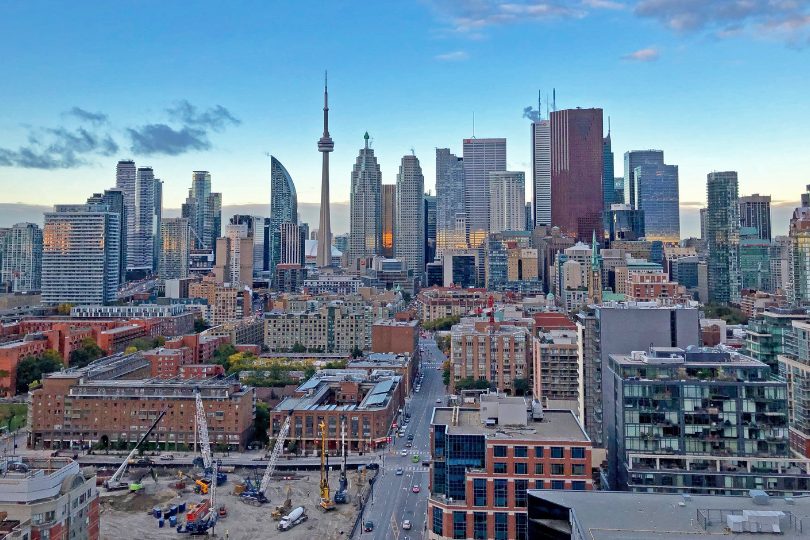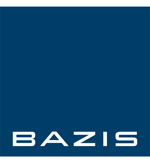Everything You Need to Know About Buying a Pre-Construction Condo in Toronto: FAQs

Toronto’s real estate market continues to be one of the hottest in Canada, and for many buyers, pre-construction condominiums offer an exciting opportunity to invest early. Whether you’re a first-time buyer looking for an affordable way to enter the market or an investor seeking long-term appreciation, purchasing a pre-construction condo can be a strategic move. But how does it work? What should you look out for? And is it the right investment for you?
To help you make an informed decision, we’ve compiled answers to some of the most frequently asked questions about pre-construction condos in Toronto. Read on to learn more.
What Are Pre-Construction Condominiums?
Pre-construction condominiums (also referred to as pre-construction condos) are residential units sold by developers prior to being constructed, meaning buyers purchase them before they’re built. This means that buyers make their selection based on floor plans, renderings, and other specifications provided by the developer. The construction process typically takes several years, during which time buyers make installment payments toward their purchase.
Are Pre-Construction Condominiums a Good Investment?
Investing in a pre-construction condo can be a great way to enter or diversify your real estate portfolio, especially in Toronto’s thriving real estate market, where demand for housing remains strong. These properties often appreciate in value over time, offering potential financial gains. However, as with any investment, there are risks involved, such as market fluctuations and project delays. It’s important to do thorough research and to consult with real estate professionals before making any final decisions about pre-construction investments.

How Do I Finance a Pre-Construction Condominium?
Financing a pre-construction condo is similar to financing any resale property. Buyers typically must secure a mortgage to cover the condo’s purchase price; however, pre-construction condos often require a larger initial down payment. Since the property isn’t built yet, developers typically structure payments in stages. To ensure a smooth financing experience, it’s best to work with an experienced mortgage broker or lender who specializes in pre-construction financing.
What Should I Look for in a Developer?
Choosing the right developer is crucial when buying a pre-construction condo. Look for a developer with a strong track record of completing high-quality projects on time and within budget. Research their past developments, read reviews from previous buyers, and check for any legal issues or complaints. An experienced and reputable developer reduces the risks associated with pre-construction purchases.
What Fees Should I Expect When Buying a Pre-Construction Condominium?
Beyond the purchase price, pre-construction condo buyers in Toronto should be aware of additional costs, including development charges, occupancy fees, and closing costs. These expenses can add up, so it’s important to factor them into your budget early on to avoid any unexpected surprises when it’s time to take ownership. Plan ahead and be prepared.

What Happens if the Project Is Delayed or Cancelled?
Delays or project cancellations are one of the greatest risks that pre-construction condo buyers face when purchasing pre-construction properties. Delays can force buyers to wait longer before taking possession of their unit. In the case of cancellation, buyers may be entitled to a refund of their deposit, but it’s essential to review the terms of your purchase agreement to understand your rights and the developer’s obligations in such a scenario. Having a real estate lawyer review your contract can provide added peace of mind.
How Can I Resell a Pre-Construction Condominium?
Once construction is complete and the building has been registered, buyers have the option to move in or sell their unit. If the market has appreciated, reselling can be profitable. Buyers can work with a real estate agent or list the property themselves to find suitable buyers. Some pre-construction contracts include restrictions on assignments (selling a unit before the building is complete), so it’s important to review your purchase agreement carefully.
Do you have any questions that we haven’t covered here? Connect with BAZIS on social media (Facebook, X, or Instagram) and let us know!
Everything You Need to Know About Toronto’s 2024 Real Estate Market Forecast

As we head into 2024, things are looking bright for potential new home and condo purchasers in Toronto. While the Toronto real estate market has been facing some challenges, there is hope for a rebound in 2024.
According to reports from RE/MAX, there was a decrease in average sale prices and the number of sales in the Greater Toronto Area (GTA) between 2022 and 2023. The average sale price decreased by 5.9%, from $1,203,916 in 2022 to $1,132,681 in 2023, and the number of sales decreased by 13.5%, from 67,452 in 2022 to 58,367 in 2023.
In the GTA in 2023, the market was considered a seller’s market. However, there could be a shift toward a balanced or buyer’s market by the end 2024, depending on the neighbourhood in question. Average residential sale prices are predicted to drop by 3%, whereas the number of sales is expected to grow by 10.4%.
The top three areas to keep an eye on in the GTA are the Durham Region, Markham/Richmond Hill, and downtown Toronto. Durham Region is particularly attractive due to its affordability and value. Markham/Richmond Hill is gaining popularity due to improved affordability, and downtown Toronto remains desirable for its access to public transit and walkability, as well as its proximity to endless amenities and cultural attractions.

In terms of new construction trends, there is a focus on smaller condo units that offer desirable amenities like terraces, swimming pools, and fitness facilities.
According to the Toronto Regional Real Estate Board (TRREB), the condo market has become more balanced, with sales increasing but listings growing at a faster rate. This has led to a slight decrease in the average price, providing some relief amidst higher borrowing costs. The market conditions have provided more choice and negotiation power for first-time buyers, resulting in lower selling prices on average. While the market is expected to tighten in the second half of 2024, relief in borrowing costs (including interest rates) is anticipated in 2024 and 2025 due to population growth and market trends. This, coupled with a relatively resilient economy, should make home ownership affordable for more households this year and moving forward.
According to the Royal LePage Market Survey Forecast, the aggregate price of a home in Canada is projected to reach $843,684 in Q4 2024, with a 5.5% annual increase, while the median price of a condo will jump 5% to $616,140. The majority of price appreciation is expected in the second half of 2024, with modest quarterly increases in Q3 and Q4. The prediction is based on the assumption that the Bank of Canada has finished raising interest rates and will hold the key lending rate at its current 5% through the first half of the year. Modest interest rate cuts are expected to begin in the late summer or fall, potentially pushing home prices up.
Overall, this is good news for the Toronto real estate market. A rebound in home sales is anticipated, driven by lower borrowing costs and increased affordability. According to Phil Soper, the President and CEO of Royal LePage, with the right conditions, the market could return to mid-single-digit home price appreciation, which is a healthy long-term affordability level.
Despite the challenges posed by the current market conditions, according to a Leger survey commissioned by Re/Max, 73% of Canadians consider real estate a sound long-term investment. What do you think? Learn more about new condos and townhomes for sale in downtown Toronto by checking out BAZIS’ new communities.
Do you have questions about the Toronto real estate market? Connect with BAZIS on social media (Facebook, Twitter or Instagram) and let us know!
How to Secure Financing for a Pre-construction Condo Purchase

A pre construction condo purchase can be an excellent investment opportunity, offering you access to properties at lower prices while potentially capitalizing on appreciation over time. Securing financing for such purchases isn’t always a smooth process; here we explore key steps and considerations when financing pre construction properties.
Understand the Preconstruction Condo Purchase Process
Before exploring financing options for pre construction condo purchases, it’s essential to gain an understanding of the purchase process. Preconstruction transactions differ from buying an existing unit in that they involve purchasing property that has yet to be built; typically requiring you to sign a purchase agreement and place a deposit. Construction may take several years during which you need to secure financing for its completion.
Create Your Budget and Creditworthiness Profile
Establish a clear budget before beginning your financing search for a pre construction condo. Figure out how much is comfortably affordable, while being realistic about your financial capabilities and taking into account factors like purchase price, closing costs, property taxes and any additional expenses associated with purchase.
Next, review your creditworthiness. Lenders will carefully assess your credit history and score to assess the risk you pose as a borrower. Make sure your report is accurate and pay off any outstanding debts promptly in order to increase your score – this will improve your chances of securing better financing terms!
Research Your Loan Options and Consult a Mortgage Professional
Once you understand your budget and creditworthiness, it’s time to investigate lending options. Investigate different lenders and loan programs available for pre construction condo purchases; traditional mortgage options may also be available as well as specialty financing products tailored specifically to preconstruction purchases.
Engaging a mortgage professional who specializes in pre construction condo financing can be tremendously helpful. They can lead you through the process, offer insightful guidance, and assist in finding suitable loan solutions tailored specifically to your financial situation.
Prepare a Strong Mortgage Application
To secure financing, it is crucial that you prepare a strong mortgage application. This typically includes providing documentation such as proof of income, employment history, bank statements and tax returns as well as copies of purchase agreements. Make sure all necessary paperwork is ready so as to speed up this process and expedite its completion.
Keep an Eye on Both Timeline and Contingencies During a Project
When financing a pre construction condo purchase, it’s crucial to be mindful of both timeline and potential contingencies. Construction delays or changes to the project could disrupt financing plans; make sure your mortgage professional and builder remain updated about any alterations, and adjust accordingly.
Additionally, it’s essential that you read your purchase agreement thoroughly in order to fully comprehend any contingencies or conditions that must be fulfilled for final purchase. Consult a lawyer in order to fully comprehend your rights and responsibilities as a buyer.
Stay Proactive and Flexible for Best Results
Preconstruction requires proactive and flexible action from both parties involved, from staying in communication with your mortgage professional and promptly providing any requested information or documentation, to anticipating possible fluctuations in interest rates or lending requirements and being open to alternative financing strategies if necessary.
Stay Positive and Start Early
Securing financing for a pre construction condo purchase requires careful planning, research, and collaboration with professionals. By setting a realistic budget, improving creditworthiness, exploring lending options, creating a strong mortgage application package, and remaining proactive during the process you may increase your chances of finding favorable terms for pre construction condo financing.
BAZIS is a real estate development company specializing in developing communities and pre construction condos in Toronto area. We’re committed to excellence in every facet of the commercial and residential real estate development process. Contact us today!
Understanding Canada’s New Tax-Free First Home Savings Account (FHSA)

Are you a Canadian dreaming of owning your first home? Saving for a down payment can be a daunting task, but there’s a new option available that can make the process easier. The new First Home Savings Account (FHSA) is a registered plan that allows you to save tax-free for your first home, up to certain limits. Although availability is currently limited and varies by financial institution, many institutions are expected to launch their FHSA later in 2023. In this blog post, we’ll explore everything you need to know about the new FHSA, including why it was created, how it works, how it’s different from the existing RRSP Home Buyers’ Plan (hint: it’s more generous!), and how you can maximize its potential, even if you don’t have immediate plans to buy a home. So, if you’re a Canadian looking to make your dream of home ownership a reality, keep reading!
What is an FHSA?
An FHSA (First Home Savings Account, just to recap) is a registered account announced by the federal government in 2022. It’s designed to help Canadian residents save for their first home tax-free. An FHSA combines some of the features of a Registered Retirement Savings Plan (RRSP) and Tax-Free Savings Account (TFSA). Contributions to an FHSA will generally be tax-deductible, similar to an RRSP. Withdrawals to purchase a qualifying home will be non-taxable, similar to a TFSA or the RRSP Home Buyers’ Plan (more on this later).
Why should I consider opening an FHSA?
Opening an FHSA has several advantages, including:
- Tax benefits: Your FHSA contributions can reduce your taxable income.
- Tax-free growth: Any investment income in your FHSA is non-taxable while it’s in your account.
- Tax-free withdrawals: Pay no taxes on your withdrawals when you use your FHSA toward the purchase of a qualifying home.
- No repayment is necessary: Unlike the RRSP Home Buyers’ Plan, any funds withdrawn to go toward the purchase of a new home do not need to be repaid.
How do I qualify to open an FHSA?
To open an FHSA, you must be a Canadian resident who has reached the age of majority in your province or territory. You must also be an eligible first-time homebuyer who hasn’t lived in a qualifying home in the past four calendar years.
Types of FHSAs
You can hold the same types of investments in an FHSA as in a TFSA or RRSP, including cash, mutual funds, publicly traded securities, government and corporate bonds, and guaranteed investment certificates (GICs). When it comes to FHSAs, there are three different types that can be offered:
- Depositary FHSA: An account with a financial institution that holds money, term deposits, or GICs.
- Trusteed FHSA: A trust with a trust company as trustee that holds qualified investments such as money, term deposits, GICs, government and corporate bonds, mutual funds, and securities listed on a designated stock exchange.
- Insured FHSA: An annuity contract with a licensed annuity provider.
Banks, insurance companies, credit unions, and trust companies can all be FHSA issuers that offer these types of accounts. Additionally, if you prefer to build and manage your investment portfolio by buying and selling different types of qualified investments, you can set up a self-directed FHSA.

How much can I contribute and withdraw from my FHSA?
If you’re considering opening a FHSA, it’s important to understand the rules around contributing and withdrawing funds. The annual contribution limit for an FHSA is $8,000, which includes any transfers you make from an RRSP. You can carry forward any unused portions of your annual contribution limit up to a maximum of $8,000. The lifetime contribution limit for an FHSA is $40,000, and you must use your FHSA contributions within 15 years of opening the account or by the time you turn 71 years old, whichever comes first. After that time, you can transfer your savings into an RRSP or Registered Retirement Income Fund (RRIF) or make a taxable withdrawal. The good news is that there’s no limit for qualifying withdrawals, which means that if you qualify to use your savings toward the purchase of a qualifying home, you can withdraw amounts from your FHSA tax-free. Individuals may claim an income tax deduction for FHSA contributions made within the calendar year or in a previous year, to the extent not previously deducted, and a maximum of $8,000 unused contribution room can carry forward to the following year.
What is a qualifying withdrawal?
If you’re a first-time homebuyer and a resident of Canada, you may be eligible to make a qualifying withdrawal. A “qualifying home” is defined as a housing unit located in Canada, including a share of the capital stock of a cooperative housing corporation. To be eligible, you must have a written agreement to buy or build a qualifying home located in Canada before October 1st of the year following the year of withdrawal. Additionally, you must intend to occupy the qualifying home as your principal place of residence within one year of buying or building it.
What if I don’t end up buying a home?
Funds withdrawn from your FHSA that are not used to purchase a qualifying home are subject to tax. If you find that you have a balance in your FHSA that you’re not using toward a home purchase, you have the option to transfer those funds to an RRSP or RRIF on a non-taxable transfer basis, subject to applicable rules. The great news is that transfers from your FHSA to your RRSP or RRIF do not impact your available RRSP contribution room. It’s important to note, however, that the funds transferred to an RRSP or RRIF will be taxed upon withdrawal. So, if you’re not planning on using your FHSA savings toward a home purchase, transferring the funds to an RRSP or RRIF could be a smart move to avoid paying taxes on the balance.
Can I transfer funds from my RRSP to an FHSA?
It’s possible to transfer money from your RRSP to your FHSA without paying taxes. However, there are annual and lifetime contribution limits for these transfers, and they cannot be claimed as a deduction from your income. It’s important to note that transferring funds from an RRSP to an FHSA will not increase your RRSP contribution room. Additionally, it’s not currently possible to transfer assets in-kind to your FHSA.

What’s the difference between an FHSA and the existing RRSP Home Buyers’ Plan?
Under the current Home Buyers’ Plan, Canadians who meet eligibility requirements and conditions can withdraw a maximum of $35,000 from their RRSP to go toward the purchase of a first-time home. They must then repay the amount over a period of 15 years. However, an FHSA works differently, in that there is no requirement to repay the funds withdrawn from the account. As well, you’re able to contribute and withdraw up to $40,000 (versus $35,000). However, only $8,000 per year can be contributed, whereas with the RRSP Home Buyers’ Plan, the amount you can contribute annually depends on your income and your personal available contribution room.
Can I use both the FHSA and the Home Buyers’ Plan to buy my home?
Yes. You can use combined savings from your Home Buyers’ Plan and your FHSA toward the purchase of the same qualifying home.
Are you thinking about opening a First Home Savings Account (FHSA), and if so, do you have any questions? Connect with BAZIS on social media (Facebook, Twitter or Instagram) and let us know!
BAZIS is a real estate development company specializing in developing communities and pre construction condos in Toronto area. We’re committed to excellence in every facet of the commercial and residential real estate development process. Combining visionary architecture, design, marketing and construction with the epitome of corporate integrity and environmental responsibility, BAZIS has become a major force in articulating Toronto’s ever-evolving skyline.
Buying a Pre-Construction Condo in Downtown Toronto: Do You Have to Pay HST?

Buying a brand new pre-construction condo in downtown Toronto is exciting, but it may also bring up many questions and uncertainties. It can be confusing trying to understand how HST works, for example, and who pays for it. So, let’s break down HST when purchasing a pre-construction condo in Toronto and take a closer look at the HST Rebate.
In 2010, Ontario implemented Harmonized Sales Tax (HST), which raised the tax on new homes to 13% (HST) – a total of 5% GST (federal taxes) and 8% PST (provincial taxes). To help new homeowners cover the growing costs of owning a new home, the government created the HST Rebate Program. This program works in two ways – depending on what kind of buyer you are – to reimburse buyers for a portion of the tax.
The two ways that buyers can qualify for the HST Rebate in Ontario are:
- HST New Home Rebate (NHR): When you buy a pre-construction condo that you plan to live in (end user)
- New Residential Rental Property Rebate (NRRPR): When you buy a pre-construction condo as an investor with the intent of renting it out after closing (investor)
End Users
When you buy a pre-construction condo in Downtown Toronto, you’re assigning the right to the HST rebate to the builder. The builder then uses the rebate to reduce the purchase cost of the property. This portion of the HST is not added to your property’s purchase price, and the builder will apply for the HST rebate for the property, thus reducing the amount due at closing by the amount of the rebate.
In short: you don’t have to pay for HST on your new condo, as it’s already built into the final purchase price of the home, including the cost of the HST NHR. This is provided you’re a Canadian resident and provided that you, or an immediate family member such as a parent or sibling, plan on being the principal resident of the condo.
One thing to keep in mind is that if you sell or lease the property before the one-year mark, the Canada Revenue Agency (CRA) will require you to pay back the HST Rebate in full.
Investors
If you plan on purchasing a pre-construction condo for sale in Downtown Toronto with the intent of renting it out after closing, you need to apply for the New Residential Rental Property Rebate (NRRPR) rather than the NHR.
To receive the HST Rebate, you need to submit a one-year lease agreement and prove that the property will be rented out for one year after closing. Additionally, you must pay the full HST amount upfront and you will receive the rebate a couple of months after sending in the proof of the lease agreement. Similarly to the NHR, if you end up selling or flipping the property before the one-year mark, the CRA will require that you pay back the HST Rebate in full.

How Much Is the HST Rebate?
The amount of the HST Rebate varies depending on the price of the new condo. If the pre-construction condo is priced under $350,000, then you’re eligible to receive a maximum of $30,000 back (36% rebate on the GST portion, and 75% on PST). Between $350,000 and $450,000, there is a sliding scale, and for properties costing more than $450,000, a maximum rebate of $24,000 can be received.
There are many HST Rebate calculators on the internet that you can consult to calculate the exact amount, but keep in mind that if you’re purchasing a pre-construction condo and plan to live in it, the HST in the majority of cases will already be factored into the purchase price, and you don’t need to worry about it.
Do you have any questions about HST when buying a pre-construction condo in Toronto? Connect with BAZIS on social media (Facebook, Twitter or Instagram) and let us know!
BAZIS is a real estate development company specializing in developing communities and pre construction condos in Toronto area. We’re committed to excellence in every facet of the commercial and residential real estate development process. Combining visionary architecture, design, marketing and construction with the epitome of corporate integrity and environmental responsibility, BAZIS has become a major force in articulating Toronto’s ever-evolving skyline.
Canada’s Changing Mortgage Rules: What You Need to Know

The ease with which new home, townhouse or condominium buyers can get a mortgage fluctuates over time depending on borrowing limits, interest rates, insurance rules and more. If you’re thinking of buying real estate, you’ll want to know the latest market news and updates. The Canada Mortgage and Housing Corporation (CMHC) recently announced changes that may affect your ability to get a mortgage. This comprehensive blog will cover all the new rules and everything you need to know if you’re considering applying for a mortgage in the near future.
Canada’s New Mortgage Eligibility Rules
In response to the COVID-19 pandemic, the CMHC announced changes to the eligibility rules for mortgage insurance in June 2020. The new rules came into effect on July 1, 2020.
As the COVID-19 pandemic has affected millions of Canadians and has heavily impacted the housing industry due to widespread job losses, businesses closing and a temporary drop in immigration, the CMHC responded by changing its underwriting policies for insured mortgages. These rules were designed to protect Canadian home buyers and to reduce risk.
According to the CMHC, the following changes will now apply for new applications for homeowner transactional and portfolio mortgage insurance:
- Limiting the Gross/Total Debt Servicing (GDS/TDS) ratios to its standard requirements of 35/42;
- Establishing minimum credit score of 680 for at least one borrower; and
- Non-traditional sources of down payment that increase indebtedness will no longer be treated as equity for insurance purposes.
In effect, the new mortgage rules lower the amount of debt that you are able to carry (as an applicant for an insured mortgage), require you to have a higher credit score than before in order to qualify for CMHC insurance, and require that you use your own funds for your down payment, rather than borrowed funds.
Here is a more detailed breakdown, as summarized from MoneySense:
Change 1: Less Debt as a Percentage of Gross Income
Old rule: If a buyer had a good credit score and reliable income, they were previously able to spend up to 39% of their gross income on housing (which includes their mortgage, property tax, heating bill and half of condo fees), and they were allowed to borrow up to 44% of gross income once credit card, car payments and other loans were included.
New rule: Now, all home buyers are limited to spending up to 35% of their gross income on housing, and can only borrow up to 42% of gross income once other loans are included.
Change 2: New Minimum Credit Score Established
Old rule: Previously, in order to qualify for an insured mortgage, at least one borrower (or their guarantor) had to have a minimum credit score of 600 (which is only considered “fair”).
New rule: Now, the minimum has been raised to 680 (which is considered “good”). Not sure what your credit score is? You can check it for free online.
Change 3: No More Borrowed Down Payments
Old rule: Previously, home buyers could use unsecured personal loans, unsecured lines of credit and even credit cards toward their minimum down payment. (The minimum down payment is 5% for houses valued up to $500,000 and 10% of the amount over $500,000, up to $1 million.)
New rule: Now, borrowers must provide the down payment “from their own resources,” CMHC says. Basically this means that home buyers must use their savings, equity from the sale of a property, a non-repayable financial gift from a relative, funds borrowed from other liquid financial assets or against other real property, or a government grant.
The mortgage stress test is staying the same. This test requires borrowers to prove that they can still make their monthly mortgage payment if interest rates rise.
How the New Rules May Impact You
These rules make it safer and more risk-free to hold a mortgage. Homeowners will have fewer worries about being approved for a too-high mortgage that may become stressful to uphold over time. Many Canadians have over-leveraged themselves to afford the home of their dreams, which can cause anxieties and the very real risk of defaulting on your mortgage and foreclosure.
Even before the COVID-19 pandemic hit in March, mortgage delinquency rates (the rate at which homeowners failed to make mortgage payments in accordance with their loan agreement) were at the highest they’d been in nearly a decade. According to Equifax Canada, the percentage of Canadians who were three or more months behind on their debt payments in the final three months of 2019 was 1.2%, an 11% jump compared with the same period in 2018.
The Benefit
With the debt that Canadian households have accumulated rising, getting a mortgage that’s within your means is just the smart thing to do.
“These actions will protect home buyers, reduce government and taxpayer risk, and support the stability of housing markets,” said Evan Siddall, CMHC’s President and CEO.
If you’re not in the high-risk category of new home buyers, these rules may not affect you at all. They’re also beneficial in that they reduce the number of new home buyers who will be able to enter the market, which is expected to slow demand and balance out home prices.
And with today’s historically low interest rates, it’s a great time to jump into the market. You’ll be able to save on interest and have lower monthly mortgage payments, putting more money in your pocket amidst the general financial uncertainty that Canada and the world are currently experiencing due to the COVID-19 crisis.
Make sure to follow BAZIS on social media (Facebook, Twitter and Instagram) for more news, info, and industry updates.
150 Years Old and still the Hottest on the Market
As we near Canada’s 150th birthday, the red of our national flag may be shining a little brighter from blushing so hard as the world takes note of just home amazing Canada is. Continue reading
